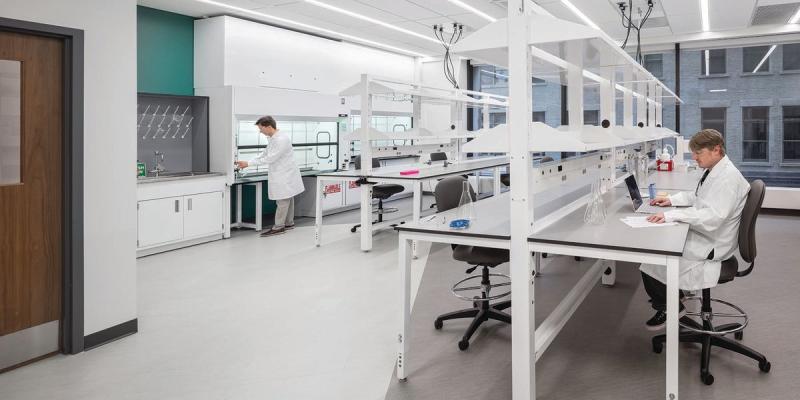The Advantages of Integrated Power and Lighting Systems in Laboratories and Specialized Workspaces

Integrated power and lighting systems offer a practical solution for labs and specialized workspaces, addressing the unique challenges these environments face. By combining power distribution and lighting into a single setup, these systems simplify workflows, improve organization, and support safer operations—key factors in spaces where precision and clarity matter. Managing separate circuits and lighting often creates unnecessary complexity, while an integrated approach keeps workspaces streamlined and better suited to scientific and technical tasks.
As laboratories adopt new technologies and equipment, the flexibility of integrated systems becomes even more valuable. They allow for easy adjustments to layouts, equipment, and power needs, helping labs make better use of space and resources. By focusing on efficiency, safety, and cost management, these systems make workspaces more functional and well-organized overall.
Streamlined Operations and Cost Savings
Combining power and lighting into a single system creates a more efficient setup for labs and specialized workspaces. It simplifies installation and reduces operational challenges, making everything run more smoothly. Fewer circuits and control panels lead to faster installations, lowering labor costs and increasing productivity. With fewer parts to manage, teams can focus on the important aspects of their work instead of complicated wiring.
Partnering with companies like Track Busway can further optimize these systems by offering advanced power distribution solutions that enhance flexibility. Their products make it easier for labs to adapt their layouts as needed, promoting a smooth, cost-effective workflow. Changes can be made easily, allowing for flexible setups that meet different needs throughout the day.
Space Optimization in Limited Environments
Designing labs and specialized workspaces often comes with the challenge of limited space. Integrated power and lighting systems help by combining several functions into one setup. This reduces the need for extra cables and fixtures, cutting down on clutter. As a result, the space feels more open and functional, making it easier for teams to collaborate and work efficiently.
With fewer hardware pieces, the layout also improves traffic flow and accessibility. This is key for safety, as it makes the space easier to manage without tripping over equipment or cables. Integrated systems not only save space but also help create an organized environment that improves productivity.
Flexibility and Adaptability for Changing Needs
The modular design of integrated power and lighting systems offers great flexibility for laboratory settings. This setup makes it easy to rearrange things as project needs change, avoiding the hassle of traditional setups. When new equipment is added or layouts change, there’s less need for rewiring. Users can adjust electrical connections and lighting with minimal disruption to ongoing work.
This ability to make changes smoothly helps laboratories stay agile, which is vital when adapting to new technologies or project demands. It allows staff to shift resources without putting too much strain on their schedules, reducing downtime and supporting faster progress in innovation and experimentation.
Improved Safety through Reduced Hazards
Accidents in labs can have serious consequences, especially when dealing with sensitive materials and equipment. Integrated power and lighting systems reduce these risks by streamlining wiring and improving power distribution. By consolidating cables, there are fewer tripping hazards, making the workspace safer for everyone. An organized layout with less clutter also supports efficient workflows and lowers the chance of accidents caused by misplaced cords or poor setups.
Proper power distribution heightens safety by balancing electrical loads across the system. This design reduces the risk of overloads and electrical fires. These precautions not only protect workers in high-risk environments but also help preserve equipment.
Cost-Effectiveness of Unified Systems
Investing in integrated power and lighting systems offers significant long-term savings for labs and specialized workspaces. These systems reduce initial installation costs by using fewer materials and requiring less labor, which helps organizations better manage their budgets from the start. The simpler setup also speeds up project timelines and reduces the issues that come with coordinating multiple contractors.
Maintenance is easier and cheaper with integrated systems because they have fewer parts. This leads to lower labor costs and less downtime. Energy-efficient technologies built into these systems further lower energy bills, improving financial performance. Better energy management helps meet sustainability goals while saving money, which can be reinvested into the facility’s core activities.
Integrated power and lighting systems are revolutionizing laboratories and specialized workspaces by enhancing efficiency, safety, and space utilization. Their ability to simplify installations and streamline operations provides clear advantages, including reduced labor costs and faster project timelines. By consolidating power and lighting into one cohesive system, labs can maximize limited space, improve workflow, and reduce clutter. The flexibility of these systems allows labs to adapt easily to different needs, keeping them functional as requirements change. Integrated systems optimize resources, enhance safety, and promote productivity, enabling laboratories to focus on their core objectives and drive research and innovation forward.
Comments